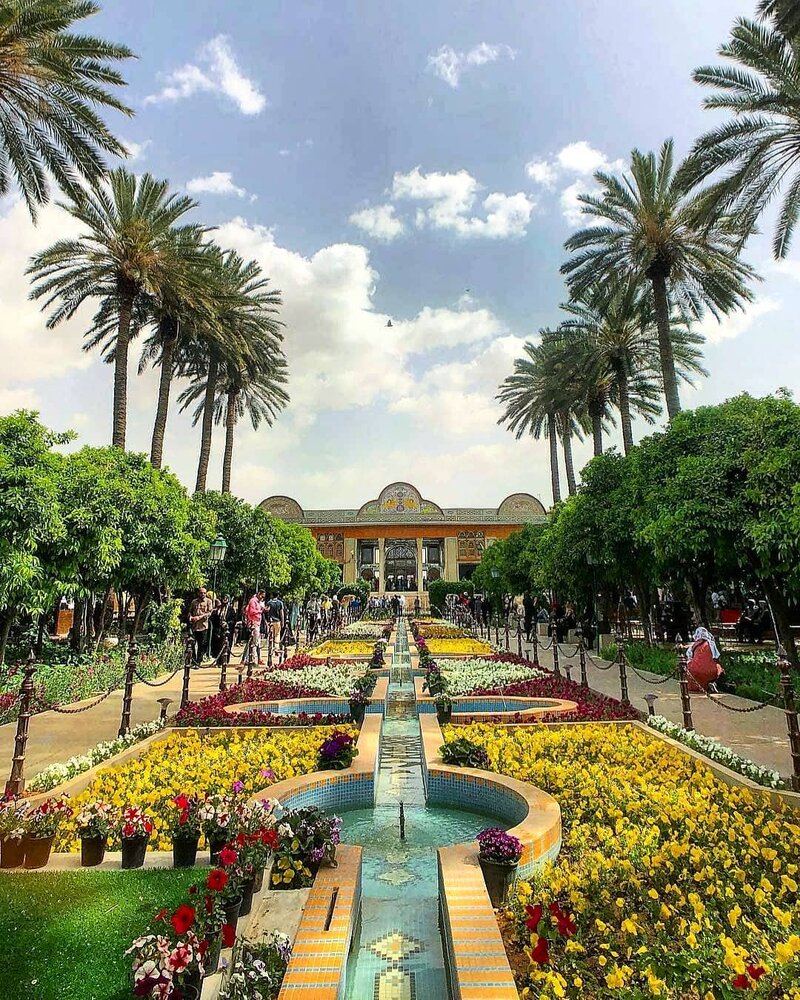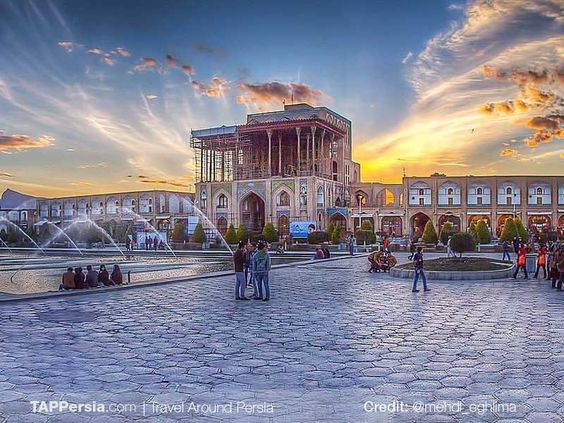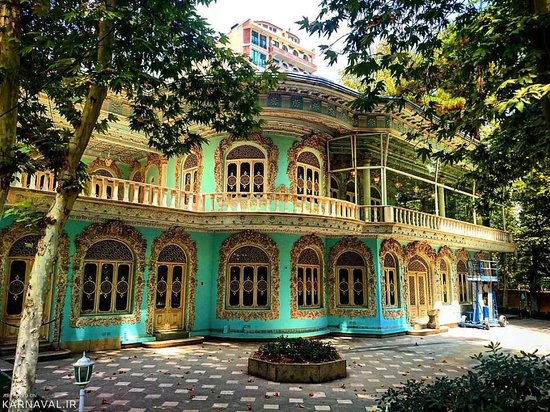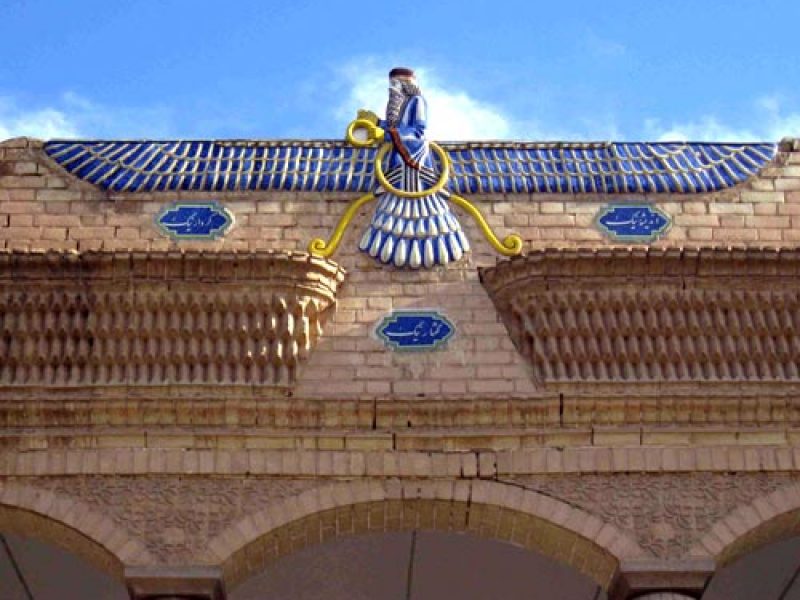
Shiraz travel Guide
Visit Persepolis: This ancient city, located about 60 kilometers northeast of Shiraz, was once the capital of the Persian Empire. It is a UNESCO World Heritage Site and contains some of the best-preserved ruins of the ancient world.
Explore the gardens: Shiraz is famous for its beautiful gardens, including the Eram Garden, Bagh-e Narenjestan, and Bagh-e Jahan Nama. These gardens are perfect for a relaxing stroll, and they offer a glimpse into the city’s history and culture.
Visit the mosques: Shiraz is home to many stunning mosques, including the Nasir al-Mulk Mosque (also known as the Pink Mosque), the Shah Cheragh Mosque, and the Atiq Mosque. These mosques are not only religious sites but also architectural masterpieces.
Shop at the bazaars: The Vakil Bazaar is one of the oldest and most traditional bazaars in Iran. It is a great place to shop for Persian rugs, spices, and handicrafts.
Visit the tombs of famous poets: Shiraz is known as the city of poets, and it is the final resting place of some of the most famous poets in Persian literature, including Hafez and Saadi. Their tombs are located in beautiful gardens and are popular places for locals and tourists alike.
Taste the local cuisine: Shirazi cuisine is known for its delicious rice dishes, kebabs, and stews. Make sure to try some of the local specialties, such as fesenjan (a chicken or meat stew made with pomegranate and walnut sauce) and shirazi salad (a fresh salad made with tomatoes, cucumber, and onions).
Enjoy the nightlife: Shiraz has a vibrant nightlife scene, with many cafes, restaurants, and bars open late into the night. The Haft Khan complex is a popular destination for locals and tourists alike, offering a variety of dining and entertainment options.
Shiraz is a beautiful city with a rich history and culture. Whether you’re interested in ancient ruins, stunning architecture, or delicious cuisine, there is something for everyone in Shiraz.
Why Shiraz Travel Guide
There are many reasons why someone would want to travel to Shiraz. Here are some of the top reasons:
Rich history and culture: Shiraz is a city with a long and fascinating history, and it is home to many ancient sites and cultural treasures. From the ruins of Persepolis to the beautiful gardens and mosques, there is no shortage of historical and cultural attractions to explore in Shiraz.
Beautiful scenery: Shiraz is known for its stunning natural beauty, including its gardens, mountains, and valleys. Whether you’re strolling through a garden or hiking in the mountains, the scenery in Shiraz is sure to take your breath away.
Delicious food: Shirazi cuisine is known for its delicious rice dishes, kebabs, and stews. If you’re a foodie, you won’t want to miss the chance to try some of the local specialties, such as fesenjan and shirazi salad.
Warm and friendly people: Iranians are known for their hospitality, and the people of Shiraz are no exception. Visitors to the city are sure to be welcomed with open arms and treated to a warm and friendly atmosphere.
Affordable travel: Traveling to Shiraz is relatively affordable, with reasonable prices for flights, accommodations, and food. This makes it a great destination for budget-conscious travelers who still want to experience all that Iran has to offer.
Overall, Shiraz is a destination that offers something for everyone, from history and culture to natural beauty and delicious cuisine. It is a city that is sure to leave a lasting impression on anyone who visits.
History of Shiraz
Shiraz is a city in southwestern Iran with a rich and storied history that dates back more than 4,000 years. The city has been an important center of Persian culture, art, and literature throughout much of its history.
Shiraz was once the capital of the Persian Empire under the Zand dynasty in the 18th century. During this time, the city experienced a period of great growth and development, with many of its most famous buildings and monuments constructed during this time.
In addition to its role as a political and cultural center, Shiraz was also a key trading hub along the Silk Road. Merchants from all over the world would pass through the city, bringing with them exotic goods and new ideas.
Throughout its history, Shiraz has been home to many famous poets and scholars, including Hafez and Saadi. Their works continue to be celebrated and studied today, and their tombs are popular tourist attractions in the city.
In the early 20th century, Shiraz became an important center of modern Iranian culture, with many of the country’s most famous writers and artists hailing from the city.
Today, Shiraz remains an important cultural and economic center in Iran, known for its beautiful gardens, stunning architecture, and rich history. It is a popular destination for tourists from all over the world, who come to experience the city’s unique blend of ancient and modern culture.
More about history and ages in shiraz
Shiraz has a long and diverse history that spans many different ages and civilizations. Here is an overview of some of the key periods in Shiraz’s history:
Ancient times: The earliest known settlement in the Shiraz area dates back to the 6th millennium BCE, during the Neolithic period. Over the centuries, Shiraz was inhabited by many different ancient civilizations, including the Elamites, Achaemenids, and Sassanids.
Islamic era: After the Arab conquest of Persia in the 7th century, Shiraz became an important center of Islamic learning and culture. The city was ruled by various Islamic dynasties over the centuries, including the Seljuks, Safavids, and Qajars.
Zand dynasty: In the 18th century, Shiraz became the capital of the Zand dynasty. During this time, the city experienced a period of great growth and prosperity, with many of its most famous buildings and monuments constructed.
Qajar era: In the 19th century, Shiraz was a key center of the Constitutional Revolution, which sought to establish a constitutional monarchy in Iran. Many of the city’s intellectuals and political activists were involved in this movement.
Modern era: In the 20th century, Shiraz became an important center of modern Iranian culture, with many of the country’s most famous writers and artists hailing from the city. The city was also heavily involved in the Iranian Revolution of 1979, which overthrew the Pahlavi dynasty and established the Islamic Republic of Iran.
Today, Shiraz is a modern and vibrant city that is home to a diverse population of Iranians from all over the country. Its rich history and culture continue to be celebrated and studied, and its ancient sites and monuments are popular tourist attractions for visitors from all over the world.
Shiraz traditional foods guide
Shiraz has a rich culinary tradition that reflects the city’s long history and diverse cultural influences. Here are some of the traditional foods that you should try when visiting Shiraz:
Shirin polo: Shirin polo is a sweet and fragrant rice dish that is made with saffron, orange peel, raisins, and almonds. It is often served as a special occasion dish, such as during weddings or religious holidays.
Shirazi salad: Shirazi salad is a fresh and light salad made with chopped tomatoes, cucumbers, onions, and herbs, such as mint and parsley. It is typically dressed with lemon juice and olive oil and is a popular side dish or appetizer.
Gheymeh: Gheymeh is a hearty stew made with yellow split peas, beef or lamb, tomatoes, and dried limes. It is often served with rice and is a popular comfort food in Shiraz.
Kalam Polo: This dish is made with rice, cabbage, ground beef, and spices, and is often garnished with saffron and fried onions.
These are just a few examples of the many delicious traditional foods that you can find in Shiraz. Make sure to also try some of the city’s famous sweets, such as Faloodeh (paloodeh), baklava, zoolbia, and bamieh. And don’t forget to wash it all down with a cup of traditional Persian tea!
The weather of shiraz
Shiraz has a moderate climate with four distinct seasons. Summers are hot and dry, while winters are mild and wet. Here is a general overview of the weather in Shiraz throughout the year:
Spring (March – May): Spring is a beautiful time to visit Shiraz, with mild temperatures and plenty of sunshine. Average temperatures range from 12°C to 24°C (54°F to 75°F), and rainfall is relatively low.
Summer (June – August): Summers in Shiraz can be hot, with average temperatures ranging from 27°C to 37°C (81°F to 99°F). The weather is dry, and there is very little rainfall during this time.
Fall (September – November): Fall is another beautiful season in Shiraz, with mild temperatures and clear skies. Average temperatures range from 13°C to 26°C (55°F to 79°F), and there is some rainfall during this time.
Winter (December – February): Winters in Shiraz are mild, with average temperatures ranging from 5°C to 16°C (41°F to 61°F). There is more rainfall during this time, but it is still relatively low compared to other parts of the country.
Overall, the best times to visit Shiraz are in the spring (March – May) and fall (September – November), when the weather is mild and comfortable. Summers can be very hot, so if you do plan to visit during this time, be sure to pack sunscreen, a hat, and plenty of water.
Shiraz historical attractions
Shiraz is a city with a rich history and culture, and there are many historical attractions to explore. Here are some of the top historical attractions in Shiraz:
Persepolis: Persepolis is an ancient city located about 60 km northeast of Shiraz. It was the ceremonial capital of the Achaemenid Empire and was built around 500 BCE. Today, it is a UNESCO World Heritage site and is one of the most important archaeological sites in Iran.
Naqsh-e Rustam: Naqsh-e Rustam is an ancient necropolis located about 12 km northwest of Persepolis. It contains the tombs of several Achaemenid kings, as well as several Sassanid reliefs.
Pasargadae: Pasargadae is an ancient city located about 130 km northeast of Shiraz. It was the capital of the Achaemenid Empire under Cyrus the Great and contains several important historical sites, including the Tomb of Cyrus and the Palace of Cyrus.
Eram Garden: Eram Garden is a beautiful Persian garden located in the northern part of Shiraz. It was built during the Qajar era and contains a beautiful palace and several fountains.
Shah Cheragh: Shah Cheragh is a mausoleum and mosque located in the center of Shiraz. It contains the tomb of Amir Ahmad, the brother of Imam Reza, and is a popular pilgrimage site for Shia Muslims.
Arg-e Karim Khan: Arg-e Karim Khan is a citadel located in the center of Shiraz. It was built during the Zand dynasty in the 18th century and contains several important historical sites, including the Vakil Bazaar and the Vakil Mosque. more about Karim khan citadel
Vakil Bazaar: Vakil Bazaar is an old bazaar located in the center of Shiraz. It was built during the Zand dynasty and contains several shops selling traditional Persian handicrafts, spices, and textiles.
More places
Hafez Tomb: The Hafez Tomb is a mausoleum and memorial dedicated to the famous Persian poet Hafez. It is located in a beautiful garden and is a popular destination for poetry lovers and tourists alike.
Saadi Tomb: The Saadi Tomb is another mausoleum and memorial dedicated to the famous Persian poet Saadi. It is located in a tranquil garden and contains several beautiful Persian-style buildings.
Narenjestan Qavam: Narenjestan Qavam is a traditional Persian mansion located in the center of Shiraz. It was built during the Qajar era and contains several beautiful Persian gardens, courtyards, and buildings.
Tomb of Khwaju Kermani: The Tomb of Khwaju Kermani is a mausoleum and memorial dedicated to the famous Persian poet Khwaju Kermani. It is located in a beautiful garden and is a popular destination for poetry lovers and tourists alike.
Atiq Jame Mosque: The Atiq Jame Mosque is one of the oldest and most important mosques in Shiraz. It was built during the Seljuk era and contains several beautiful Persian-style buildings and courtyards.
Pars Museum: The Pars Museum is a historical museum located in the center of Shiraz. It contains several artifacts and exhibits related to the history and culture of the city, including ancient manuscripts, pottery, and traditional Persian clothing.
These are just a few more historical attractions to explore in Shiraz. With its rich history and culture, there is no shortage of fascinating sites to discover in this beautiful city.
And more other places and attractions
Bagh-e Naranjestan: Bagh-e Naranjestan is another beautiful Persian garden located in the center of Shiraz. It was built during the Qajar era and contains several beautiful buildings, including the Naranjestan mansion.
Ali Ibn Hamzeh Shrine: Ali Ibn Hamzeh Shrine is a shrine and mausoleum located in the center of Shiraz. It contains the tomb of Ali Ibn Hamzeh, a nephew of Imam Reza, and is a popular pilgrimage site for Shia Muslims.
Qavam House: Qavam House is a traditional Persian mansion located in the center of Shiraz. It was built during the Qajar era and contains several beautiful Persian gardens, courtyards, and buildings.
Zinat al-Mulk House: Zinat al-Mulk House is another traditional Persian mansion located in the center of Shiraz. It was built during the Qajar era and contains several beautiful Persian-style buildings and courtyards.
Vakil Bath: Vakil Bath is an old public bath located in the center of Shiraz. It was built during the Zand dynasty and is an excellent example of traditional Persian architecture.
Quran Gate: Quran Gate is a historical gate located on the outskirts of Shiraz. It was built during the Safavid era and contains a beautiful inscription of a Quranic verse.
These are just a few more historical attractions to explore in Shiraz. With its rich history and culture, there is no shortage of fascinating sites to discover in this beautiful city.
Nightlife in shiraz
Shiraz is a conservative city and the nightlife scene is not as vibrant as some other cities in Iran. However, there are still some options for those looking for nighttime entertainment. Here are some popular nightlife spots in Shiraz:
Cafe Delight: Cafe Delight is a popular cafe and restaurant located in the city center. It is known for its lively atmosphere and live music performances.
Setareh Bar: Setareh Bar is a rooftop bar located in the Setareh Hotel. It offers a stunning view of the city and is a popular spot for tourists and locals alike.
Namazi Traditional House: Namazi Traditional House is a beautiful traditional mansion that has been converted into a restaurant and tea house. It offers a unique and elegant atmosphere for those looking for a more upscale experience.
Soltaniyeh Cafe: Soltaniyeh Cafe is a cozy and stylish cafe located in the city center. It is a popular spot for young people and offers a variety of snacks and drinks.
Zinat al-Mulk Tea House: Zinat al-Mulk Tea House is a traditional tea house located in the Zinat al-Mulk House. It offers a peaceful and relaxing atmosphere and is a great place to enjoy some tea and snacks.
Hafez Tea House: Hafez Tea House is a beautiful traditional tea house located in the Hafez Tomb complex. It offers a stunning view of the tomb and is a popular spot for poetry lovers.
These are some popular nightlife spots in Shiraz. Keep in mind that alcohol is strictly prohibited in Iran and there are no nightclubs or bars that serve alcohol in Shiraz.
At the end
I hope this travel guide has been helpful in giving you a better idea of what to expect when traveling to Shiraz. Whether you’re interested in exploring its rich history and culture, trying its delicious traditional foods, or simply enjoying its beautiful scenery, Shiraz has something to offer for everyone. Remember to be respectful of the local customs and traditions, and to dress modestly when visiting religious sites. Enjoy your trip to Shiraz!

I had a wonderful time! I love mountains. I had very much time spent on preparing to my first mountain climb. I loved how trainers and instructors helped me and the other guys from my group. There were neither difficulties nor problems. I got memorable impressions and I will come back!

I’m an experienced climber and I went to an expedition with my friends. I loved friendly atmosphere and professional attitude of our instructors. We climbed the mountain effortlessly and everybody were happy! This sport is for adventurous and brave people. Thanks for awesome time!



